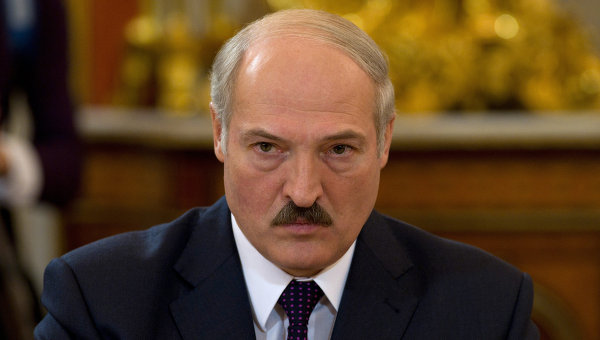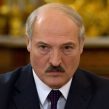
Lukashenka Holds Dialogue in Minsk With US Analysts (Part Two)
Publication: Eurasia Daily Monitor Volume: 7 Issue: 226
By:

Receiving a small group of US analysts in Minsk (EDM, December 15), President, Alyaksandr Lukashenka, appealed to the United States to develop a multi-track policy toward Belarus, instead of a single-dimensional policy [implying democracy-promotion divorced from everything else]. The free-wheeling discussion of almost three hours, partly on the record, with the president, suggested however that Washington is about to develop two additional policy tracks with Belarus. These are, first, the inclusion of Belarus in the Northern Distribution Network (NDN) for delivering supplies to US-led forces in Afghanistan; and, second, bilateral cooperation on nuclear non-proliferation and possible uses of civilian nuclear technology in Belarus.
While specific information on the NDN is not on the public record, Belarus is located directly on the transit route for US supplies that enter Europe via Latvia, for onward shipment to the Afghanistan theater of operations. Belarus is prepared to handle large transit volumes, as well as to deliver locally-made supplies, (foodstuffs and construction materials), for coalition forces and reconstruction efforts in Afghanistan. Like other leaders in countries along that route, Lukashenka regards participation in the NDN as an opportunity for political cooperation with the US and a commercial opportunity for the country.
Responding to another US policy priority, Belarus has agreed to eliminate all its stocks of highly enriched uranium by 2012. Significantly, this commitment is a matter of US-Belarus bilateral relations. US Secretary of State, Hillary Clinton, and Belarus’s Foreign Minister, Syarhei Martinau, met during the Organization for Security and Cooperation in Europe (OSCE) summit in Astana and issued a joint statement to that effect. Under the document, the US will provide technical and financial assistance to Belarus for converting its nuclear facilities to operate with low-enriched uranium fuel. The two sides pledge to continue working together on nuclear security, including security upgrades at the Belarus Institute for Nuclear Research. For its part, Belarus announced its intention to diversify its energy supply by building a civilian nuclear power plant, under IAEA safeguards: “The United States supports Belarus’ effort to complete this commercial project as expeditiously as possible” (US State Department press release, December 2).
Lukashenka’s staunch support for Georgia’s territorial integrity, despite Moscow’s strong pressures on Minsk, can also facilitate a turning point in US-Belarus relations. Following Russia’s 2008 invasion of Georgia, the Kremlin singled out Belarus from among all CIS countries, demanding recognition of Abkhazia and South Ossetia by the Belarus government. Lukashenka recounted some details of his confrontation with Moscow over this issue for the visiting American analysts. Lukashenka felt that yielding on this matter of fundamental principle would have opened Belarus to further Russian demands and pressures at the expense of Belarus’ sovereignty.
Georgian President, Mikheil Saakashvili, and members of his team are known to have met with Lukashenka a number of times since 2008. Although it came to power in Georgia through a “color revolution” type event in 2003, and supported opposition groups in Belarus for several years afterward, the Georgian leadership has shed its earlier illusions about the rapid democratization of Belarus or the political potential of those opposition groups.
More than any former Soviet republic, Belarus was a success story in those terms of reference. Lukashenka regards himself as the trustee of Soviet Belarus’ legacy, i.e., a distinct national-territorial statehood and massive industrial base. His and the government’s current ambition are for Belarus to advance from a post-Soviet to a European state. However, they are weighed down by provincial and cultural isolation from the West (a theme that keeps surfacing directly or indirectly in conversations with government officials in Minsk).
Lukashenka and his team tend to assess Belarus’ performance by comparison with Russia. That assessment encourages them to start looking for the exits from Russia’s orbit. Russia is seen mainly as a supplier of fuels and raw materials for Belarus to process into industrial products for export. Lukashenka takes special pride in the fact that the share of industrial products in Belarus’ exports is higher than the share of industrial products in Russia’s exports (not counting arms exports). From Minsk’s special perspective, Belarus is more of an industrial economy than Russia’s raw material-based economy.
The challenge to Belarus is to reduce its dual dependency on Russian raw materials and the Russian market. This year, Belarus’ exports to the EU look set to surpass its exports to Russia for the first time. Also this year, Belarus has taken unprecedented steps to diversify crude oil supplies for its export-oriented refineries. If these trends continue, Belarus could gradually move from the Russia-led Single Economic Space toward closer ties with the European Union. The EU considers the possibility of equalizing Belarus’ status with that of the other five countries in the EU’s Eastern Partnership Program, depending on the conduct of the December 19 presidential election in Belarus.
For its part, Moscow is interested in destabilizing the post-election situation in Minsk. The Kremlin evidently calculates that post-election turmoil would isolate Belarus politically from the EU, as well as reverse the recent tentative steps toward improvement in US-Belarus relations.




